According to the afterword in Lee Murray’s short story collection Grotesque, she “steals” ideas for her stories. Murray describes how she listens to conversations, “frankensteins” people’s appearances and personalities together to create characters and uses old legends to twist into her own words and world. I am so happy that I took the time to read the afterword because throughout the entire collection I kept asking myself “how can someone write with such diversity in language, characters, and plot?” If I didn’t know better and without the Maori theme that ties through many of Murray’s stories, I truly would have expected each of these stories to be written by different authors
And let me be clear: That is an exceptionally good thing!
It is difficult to review collections like this. I am going to be very careful not to give any plot spoilers and I am going to shy away from focusing too heavily on any particular story (although I wish I could do full reviews on a few of them like Selfie and Dead End Town). Instead I want to focus on how Murray creates the worlds and creatures that will surely stay with me for a long time.

Characters
First, as I said, Murray writes her characters as vastly different from each other. Different vocabulary for time periods, ages, locations and personalities of each character. I know that seems like something every author does, but Murray shows a striking difference between each individual character as well as a shocking ability to give each character their own individual voice without any bleeding across character to character.
With the tools of dialogue, direct and indirect descriptions, and action Murray has the ability to use only a few words to paint long-lasting, deep, and endless variations of people and creatures. Poets, dreamers, children, trauma victims, heroes, monsters, royalty, villains, mythical creatures, and more…all come to life in Murray’s stories and all are brought to that life by different tricks and tools.
My notes fill the margins of Murray’s book praising her ability to develop characters with ease and within the confines of short stories.
Plots
The only thing more diverse from story to story than her characters are Murray’s plots. This is where it gets hard to review books of collections like this. Each story really is its own entity. Each world is created instantly and individually. Murray uses everything from ancient tombs to un-identifiable disasters to create worlds where the monsters are believable and recognizable. What I mean is that in the story “Grotesque” the creatures would seem vastly out of place in the story “Cave Fever” but within each of their own plotted worlds, the creatures seem at home.
Even with Murray’s explanation of “stealing” ideas for her stories, the ideas and plots she comes up with are unique, intriguing and gripping. Some stories are high action, others are dialogue-based, others are more mythological…regardless of the plot and setting, Murray brings it to life and pulls us as readers into her worlds.
Language
Murray is a gifted writer. She is the type of writer that uses all the tools in her tool box with ease. Tools like symbolism, irony, humor (often very dark humor), layers of plot, and amazingly good descriptions of setting and action seem to come with ease. More importantly, each story uses different tools. Different point of views, different way of presenting dialogue, different colloquialisms and terms based on locations and time periods. I know that I am rambling on about her writing ability, but it was truly re-surprising and re-impressive with each of the stories in this collection.

Critique
Obviously no book is perfect. It wouldn’t be fair for me to pour our accolades and not offer the very few critiques I could pull out of the book. Here is where I have a problem with you, Lee Murray…there are small handful of things that while reading I thought “I wish this was better/different” and then you found a way to fix it! You make it very difficult to critique and offer suggestions! One example is that there are a good amount of Maori terms used in the stories, terms that I don’t understand and I assume the lay person doesn’t understand; however, right at the back of the book is a glossary explaining each term I didn’t recognize.
Hopefully my sarcasm is shining through here and while Murray did erase most of the critiques I have, there are a couple of things that I would like to mention.
I do feel that there are one or two weaker stories in the collection. No, not weak stories, but just weaker than the others who set the bar very high. Now, that may be based on opinion so I will not mention which stories I felt were weaker, but it is also an impossible task to have a whole collection with every story gripping every reader all of the time (even The White Album has weaker songs). That being said, there were no bad or filler stories and this is an incredible strong collection.
My last critique is that the shock ending is a bit over used. 90% of the time, shock endings are…well…shocking, but if every ending is supposed to be shocking, it loses the shock. Each ending on its own is fantastic (if not a little vague from time to time), but as a whole collection, I wouldn’t have minded a few endings that don’t leave me hanging.
Overall
I am so happy that I had the opportunity to read Grotesque and I will absolutely look up more of Lee Murray’s writing. Overall, this was an absolutely wonderful book to sit down with and get lost in worlds of monsters, horror, adrenaline, and terror.
I highly, highly recommend this book to anyone and everyone who enjoys reading, horror, or both. Order it here and enter the world of Grotesque….I dare you!













